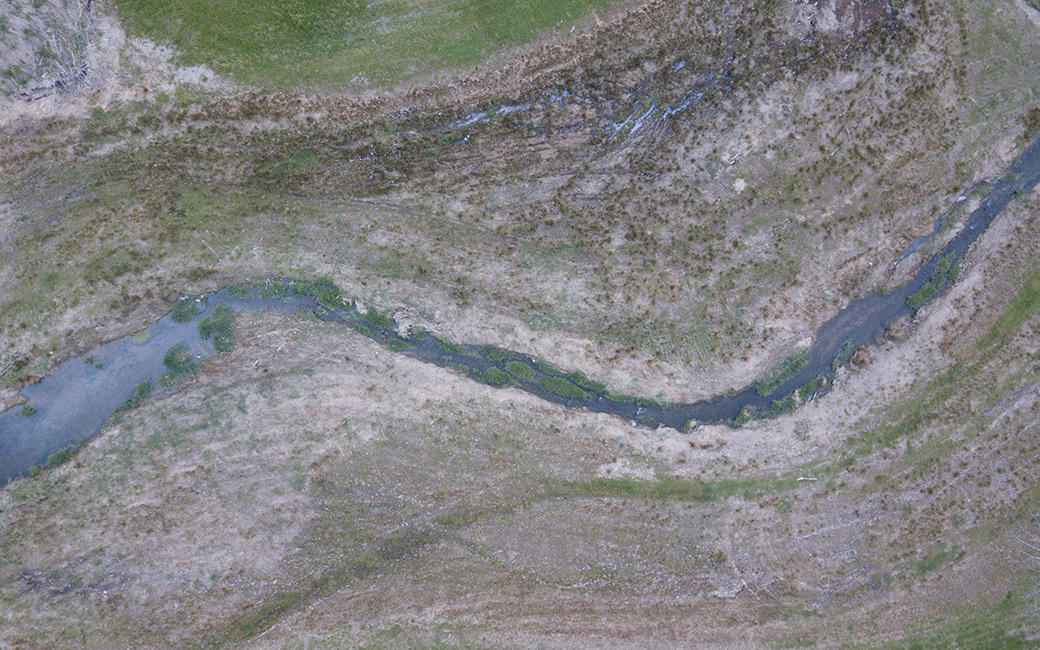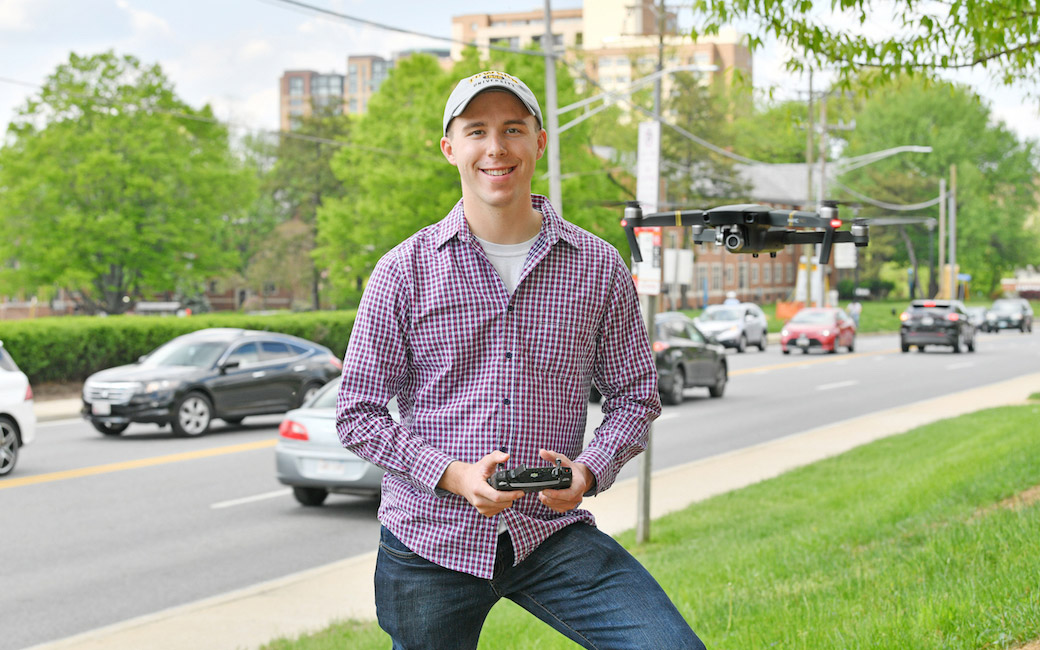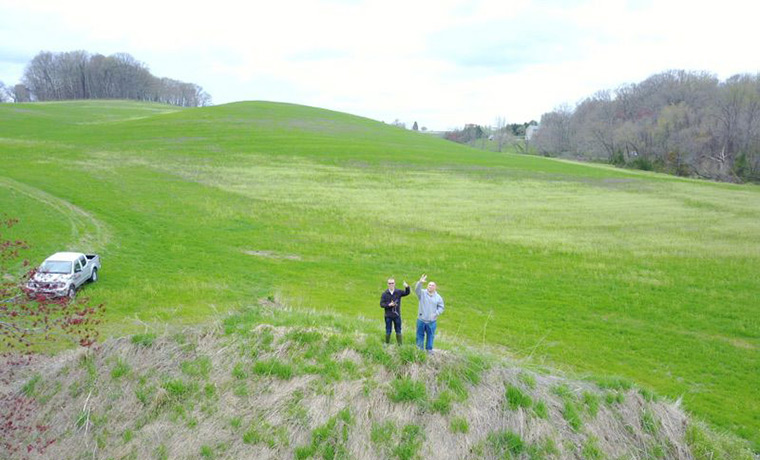
A bird's-eye view
Senior completes topographical survey capstone project using a drone
By Megan Bradshaw on May 16, 2018

Air National Guardsman Crew Chief Chris Bower is getting his bachelor’s degree in geology.
From the air.
“I joined the Air National Guard when I was 18,” said Bower, whose enlistment ends in October. “Aviation is something I’ve always wanted to do, ever since I went flying with my uncle—a Delta Air Lines pilot—in planes he built himself.”
Two parents who are Towson University alumni and National Guard benefits led Bower to TU, and his interest in earth science directed him toward geology.
“After talking to the professors, I found it to be a great program with personalized, individual learning,” he said.
A conversation with Professor Joel Moore about drones and stream restoration evolved into Bower taking on his first research project—mapping areas of the Chesapeake Bay watershed to determine the effectiveness of ecological restoration company Eco-tone’s stream re-contouring interventions in preventing runoff and reestablishing habitats.
“I’m the principal investigator of a grant from the Chesapeake Bay Trust Fund already and had considered this type of work before,” said Moore. “When I met Chris and found out he’s already a certified drone pilot, I thought he’d be perfect for this research.
“He’s a hard worker, capable of taking the ball and running with it,” Moore continued. “Being in the Air National Guard gives him a skillset suited to this kind of work.”
Bower spent the fall 2017 term planning for his flights, choosing the drone and software he needed, learning about the history of the streams he’d be mapping and putting together grant proposals.
Bower received research project funding through the Undergraduate Research and Creative Inquiry (URCI) Committee scholarship award. Division of Innovation and Applied Research staff Ardys Russakis and David Sides were impressed with Bower’s presentation to the URCI committee and offered a grant for a drone and the consultation services of the Center for GIS technical staff.
URCI and Innovation and Applied Research brought Bower’s project to the Office of Technology Services (OTS) and Student Computing Services (SCS) to help with technical needs. His work is truly interdisciplinary, connecting him with Academic Affairs, Office of Academic Innovation (OAI), Fisher College of Science and Mathematics, and Environmental Health and Safety (EHS) on campus.
Apply to use a drone on campus
Find out what equipment is available to the TU community
Bower’s work has added a new dimension to Moore’s overall stream restoration research. Moore called him a “catalyst” with regard to TU’s efforts in developing interdisciplinary drone projects.
OTS’s Michael Bachman agrees.
“Chris’ project generates massive amounts of complex data, which has forced us to consider how best to work with students going forward on finding computer processing power and storage great enough to handle the data,” Bachman said. “We had to learn on the go to scale the hardware, software and cloud services Chris needed for his project, and that really helped us understand what needs we’re going to face in the future. Many disciplines are moving toward 4K images, so this has really been a test case for the future.”
While snow delayed Bower’s first flight until March, he made four trips over the spring term, photographing three streams. Frequently patrolling stream banks alone, he flew the drone over specific areas, taking hundreds of high-resolution photos he processed with Bachman’s help.
“The point of Eco-tone’s work was to decrease the sediment runoff into the streams,” Bower said. “Michael and I used a high-speed processor and special software to turn the photos into 3-D digital elevation models. I compared models from before the work to the ones I’m generating now to see if the interventions made an impact.”
Being a pioneer is not easy. Bower had to create policies and workflows on his own, and his initiative has not gone unnoticed by Moore.
“This is not a role I would have put many undergraduates in,” he said. “Chris is setting the baseline for our future work in stream topography, and that’s a responsibility usually taken on by graduate students.”
Bower intends to focus on aviation and flight instruction after graduation, but he believes students from all disciplines would benefit from including technologies like drones in their undergraduate work.
“It’s been a good experience,” he said. “Students should be learning how to use technologies like this. Having this skillset can only benefit them in the future.”
This story is one of several related to President Kim Schatzel's priorities for Towson University: BTU-Partnerships at Work for Greater Baltimore.
